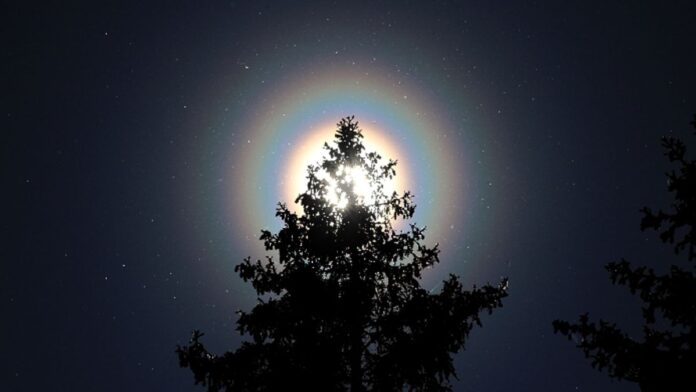Something was in the air recently when a photographer in Finland snapped a stunning shot of concentric rainbow-colored rings around the sun. And it turns out that something was pollen.
Mikko Peussa captured the eye-catching images on May 30 near his home in Turku. The multicolored rings are called “pollen coronas” and are caused by sunlight scattering off pollen in the air, according to Spaceweather.com. The star-like sparkles that appear in and around the shining rings are individual pollen grains, which can vary in size.
The effect is created by sunlight scattering, or separating into its individual wavelengths, when it hits the pollen’s surface. Some of the wavelengths interfere with or crash into one another, so only certain colors reach the observer, according to Universe Today. This is known as a diffraction pattern.
Related: Photographers capture the exact moment a gargantuan storm blasts out of the sun during a total solar eclipse
The pollen in the images comes from pine trees (Pinus sylvestris). Under the microscope, these pollen grains look like tiny “Mickey Mouses.” Their “ears” are actually a pair of air pockets that help the grains float in the wind. The air sacs align in the same direction in the wind, which helps to create the diffraction pattern and causes the rings to have a slightly elliptical shape, according to Spaceweather.com.
Pollen coronas only appear when pollen concentrations are very high and can only be clearly seen when the sun or the full moon is partially obscured. Photographers like Peussa often use filters to block out additional light and make the colors stand out more than they normally would on a sunny day.

The kaleidoscopic circles sometimes have small bumps that extend further away from the sun than the rest of the ring, but experts are unsure exactly what causes this, according to Universe Today. (None of these bumps are visible in the new images).
Pine pollen is also known to create a much larger but equally unusual visual phenomenon. In January, researchers revealed that large swarms of the tiny grains created massive algae-like sea swirls on the surface of the Baltic Sea in Poland.
Research suggests that pollen concentrations and the length of pollen seasons are increasing as a result of increased atmospheric carbon dioxide from human activity. So, pollen coronas could become a more common occurrence in the future.
This story was originally posted on Live Science.


